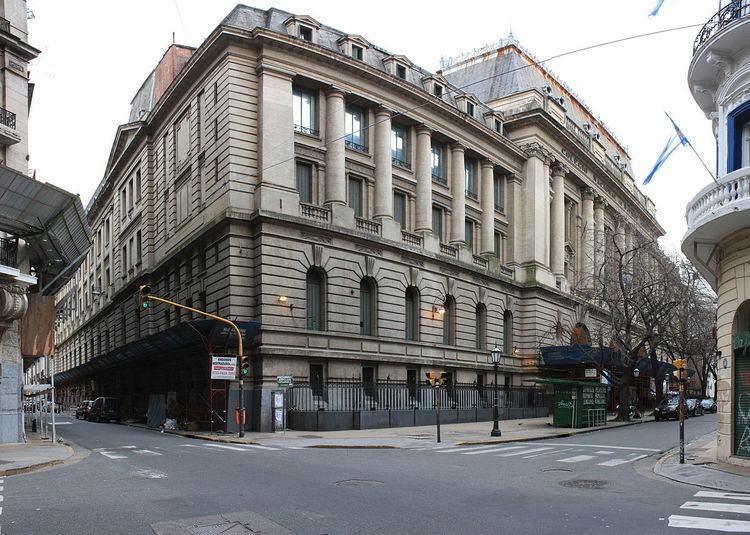Type Public secondary Rector Prof. Gustavo Zorzoli Colour(s) Blue and white Founded 1863 Founder Bartolomé Mitre | Established 1863 Enrollment 2017 Phone +54 11 4331-0733 Number of students 2,017 Gender Mixed-sex education | |
 | ||
Athletics Soccer, field hockey, swimming, handball, track and field, basketball, gymnastics, judo, rugby, volleyball, Fencing Profiles | ||
Colegio Nacional de Buenos Aires (National School of Buenos Aires) is a public high school in Buenos Aires, Argentina. In the tradition of the European gymnasium it provides a free education that includes classical languages such as Latin and Greek. The school is one of the most prestigious in Argentina. Its alumni include many personalities, including two Nobel laureates and four Presidents of Argentina.
Contents
Colegio nacional de buenos aires argentina
History
Its origins date to 1661, when it was known as Colegio Grande de San Carlos, when the colonial government entrusted the Jesuit Order with the education of the youth. After the Papal suppression of the Jesuits from Spanish Empire-controlled South America in 1767, the institution languished until 1772, when governor Juan José de Vértiz y Salcedo reopened the school as the Real Colegio de San Carlos. Vértiz, already appointed Viceroy of the Río de la Plata, renamed the school Real Convictorio Carolino in 1783, a name that endured until 1806. Thereafter, the school changed its name and program several times.
President Bartolomé Mitre redesignated the institution as the Colegio Nacional in 1863, and since 1911 the school has been administered by the University of Buenos Aires. Originally only for men, the school has admitted women as students since 1957.
Nowadays, students from the Colegio Nacional de Buenos Aires rank among the best in most science Olympiads, such as the IPhO, IChO and IBO.
Alumni
Alumni include many of Argentina's founding fathers, Presidents, members of political parties of all ideologies, internationally recognized scientists, artists, and two Nobel laureates. A partial list includes:
Facilities
The school offers an astronomy observatory, a swimming pool, a cinema, a sports campus with football, rugby, handball, volleyball, hockey and basketball courts. Free classes are available such as astronomy, photography, languages, sailing, tango, theater, history of cinema, Yoga, piano, chess, band production and martial arts. The sailing team has won many of the local competitions. It also has a choir, which sings in the most important school events.
Enrollment
In accordance with the meritocratic conception of the school, admission is highly competitive. It involves ten exams after a year-long course, testing in language, mathematics, geography, and history. Every year 1,200 candidates apply but only around 400 gain admission. There are about 2,000 students enrolled, who pay no fees since the school is public and therefore free.
Building
Designed by French architect Norbert Maillart and opened in 1906, some of the most recognizable features of the French neo-classical building include the two symmetric white marble main staircases, the water fountain in one of the courtyards, the ornately-decorated assembly hall and its organ; and the Colonial-era tunnels that are accessible from the basement, notably from a hidden entrance behind the projection-screen area in the film auditorium.
